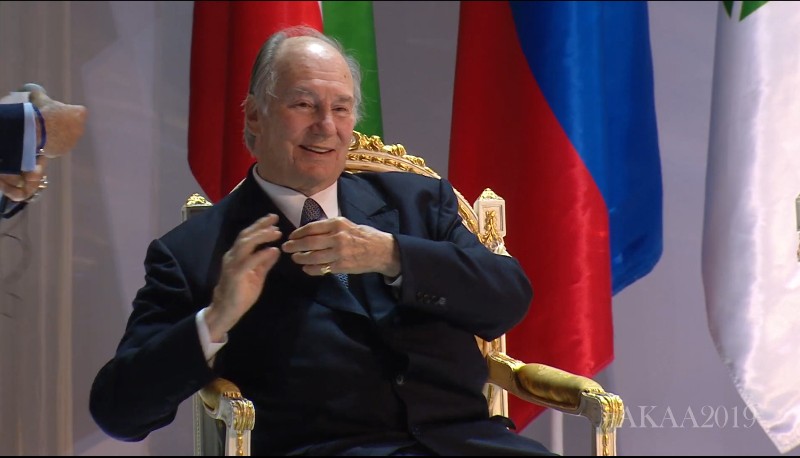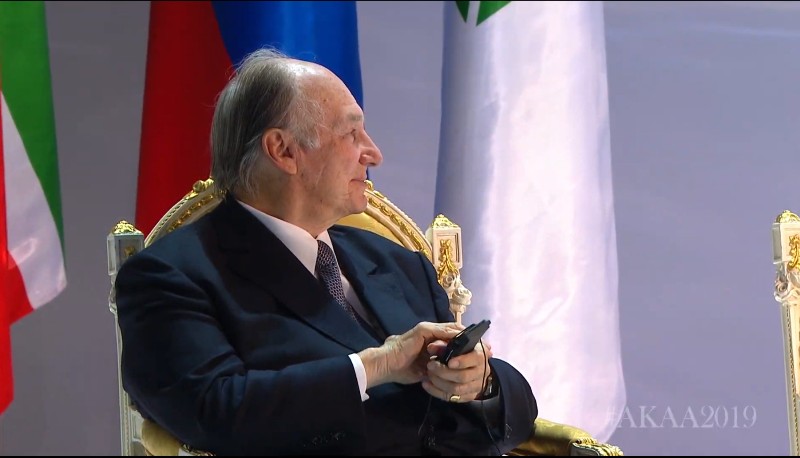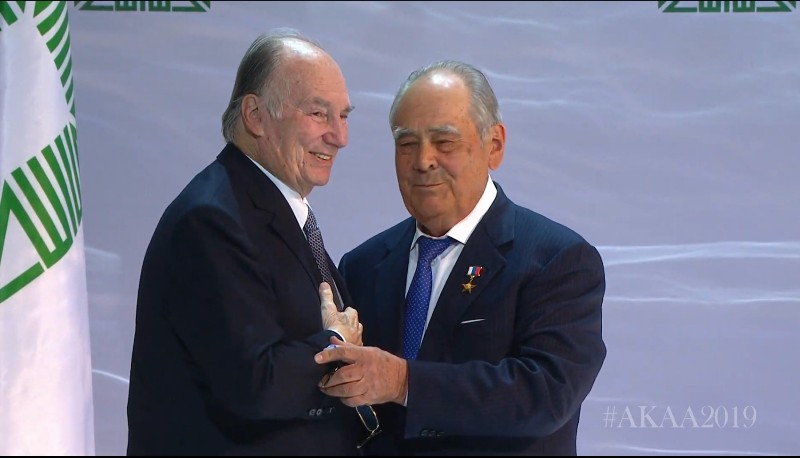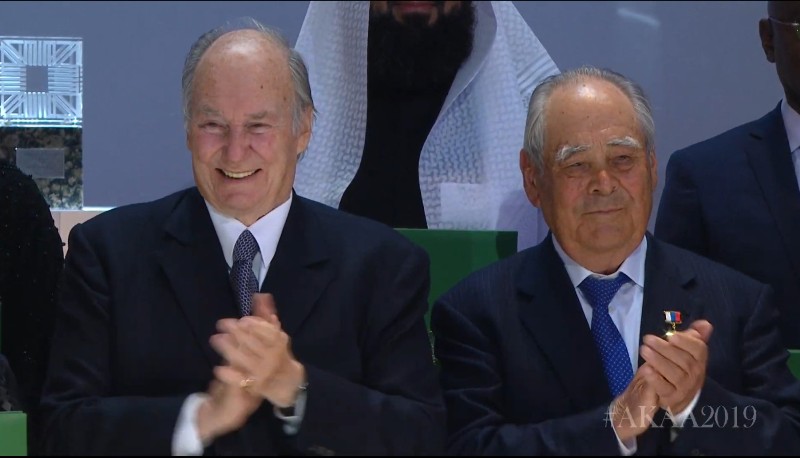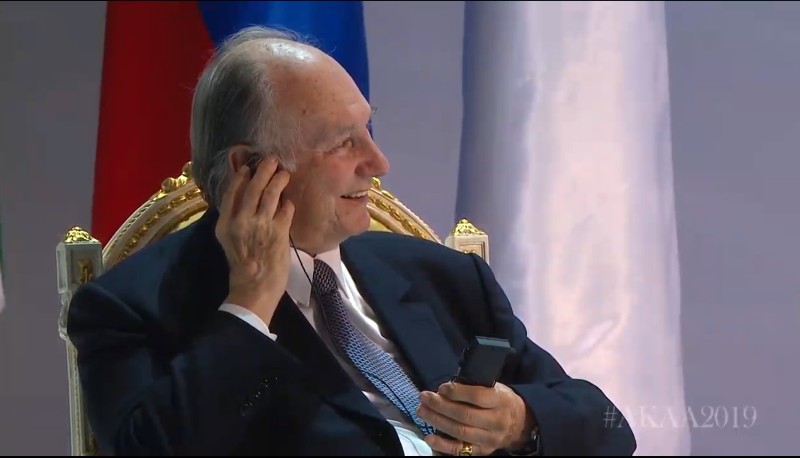https://www.akdn.org/speech/his-highnes ... n-ceremony
SPEECH DELIVERED BY His Highness the Aga Khan
LOCATION: Kazan, Republic of Tatarstan, Russian Federation (13 September 2019)
Bismillah-ir-Rahaman-ir-Rahim
As-Salam-Alai-Kum, Peace be upon you
Your Excellency Mintimer Shaimiev
Your Excellency Eleonora Mitrofanova
Respected Members of the Government
Distinguished Guests
What an enormous pleasure it is to welcome all of you to this ceremony.
We gather today with a group of extraordinary people, in an extraordinary place, and for an extraordinary purpose.
The Aga Khan Award for Architecture is organised around a series of three-year cycles - each one culminating in the recognition of our Award recipients.
Tonight we celebrate the outcomes of our Fourteenth Cycle.
This is an extraordinary moment for me as I think back to our decision to launch this programme - more than four decades ago.
What led to that decision? - You may ask - as many have asked, then and since. Just why should the Ismaili Imamat become so deeply involved in the world of professional architecture?
The simple answer lies in my conviction that Architecture - more than any other art form - has a profound impact on the quality of human life. As it has often been said, we shape our built environment - and then our buildings shape us.
This close relationship of architecture to the quality of human experience has a particularly profound resonance in the developing world. I believe that we all have a responsibility to improve the quality of life whenever and wherever that opportunity arises. Our commitment to influencing the quality of architecture - intellectually and materially - grows directly out of our commitment to improving the quality of human life.
As you may know, over these four decades, we have recognised a vast array of architectural contributions, including over nine thousand nominated projects.
But the value of this programme goes far beyond recognising specific projects.
The Aga Khan Architectural Award is not simply a prize; it is a process.
This process involves a wide range of conversations - all across the world - that shape the selection process.
The theme of the Cycle which culminates today is: “Architecture in Dialogue”. This theme, which emerged out of the deliberations of the Steering Committee and Master Jury, sees architecture as a robust interchange, one that can embrace a variety of diverse and even divergent perspectives.
A true dialogue requires not only that we articulate one perspective, but also that we listen – attentively - to other perspectives. More than that, it asks us not only to listen to one another, but also to learn from one another.
There are several ways in which architecture can blend different perspectives. Let me briefly describe just four of them,
First of all, we must foster a healthy dialogue among the actual participants in the architectural process. I don’t mean only the skilled architects themselves, but also those who collaborate with them - clients, community leaders, public officials, educators, and the builders, designers, and craftsmen who help realise their plans. Our Master Jury for this cycle paid close attention to this dimension, looking at qualities such as leadership, cooperation, and openness - qualities that help produce creative dialogue.
A second dialogue that advances the best in human architecture is an open dialogue between the past and the future. This means more than simply copying the past - or merely tacking some ancient arch or minaret or calligraphy onto a new building. On the other hand, it also means more than a heedless modernistic approach that ignores our rich heritage. Our realisation, more than 40 years ago, that architectural practice in Muslim societies had recently been forgetting its own history, helped us to shape the nature of this Award.
The dialogue we seek is one that will blend the inspiration of the past with the demands of the future. The demands are many: environmental, social, technological, and economic, not to mention the challenges of political polarisation. In all of these respects, looking back can help us look ahead - and vice versa.
A third dialogue that commands architectural attention is the dialogue between nature on the one hand and human creativity on the other. Both the natural world and the world of human capacities are divine gifts, but it is tempting sometimes to embrace one without thinking much about the other.
The Holy Quran asks Muslims not to be passive recipients of our Natural Habitat but instead to be faithful stewards of the divine creation; we need to expand our commitment in all directions. This means not merely conforming to the power of nature, but actively engaging with its challenges. At the same time we must be careful not to exaggerate the capacities for human mastery – trying to defy nature is counterproductive in many ways. A reflective dialogue between natural realities and human capabilities is also at the essence of architectural excellence.
Fourth and finally, I would emphasise the importance of intercultural dialogue in meeting the Architectural opportunities of our time. I have mentioned how this Award grew out of a concern with the deterioration - what some of us called the “hibernation” - of rich Muslim architectural traditions. But honoring one’s own historic identity, should not imply some sort of narrow isolation.
The rich architectural dialogue we seek to foster should include a renewed respect for the rich diversity of Islamic cultures themselves. As a way to exemplify this concern, we recently opened a new Aga Khan Centre in London in which seven Islamic gardens have been created, reflecting seven different Muslim traditions.
In addition, we should also be working to foster a rich dialogue with non-Islamic cultures - including diverse religious traditions. Architecture can lead the way in this effort - as we listen to one another and learn from one another across old divides.
Pluralism means more than merely tolerating a diversity of influences and ideas. It also means welcoming the learning opportunities that diversity provides, finding ways to honour that which is unique in our individual traditions as well as those values that connect us to all of humankind.
We must think of diversity itself as a divine gift, a blessing and not a burden.
I mentioned earlier that we are meeting today in a special place. Tatarstan has, for centuries, been a place of exceptional commitment to pluralistic values. The city of Kazan and the larger region have long been renowned for their rich mix of ethnicities, and cultures, including the impressive way in which their architectural heritage has been preserved and respected.
It is striking to realise that nearby Bolgar, which I visited yesterday, became a Muslim religious centre as early as 922 - almost eleven hundred years ago. Through the centuries the spirit of pluralism in Tatarstan has known times of difficult challenge and times of inspiring renewal. But through everything, a commitment to inclusiveness has persisted. This spirit was encouraged under the pluralist leadership of several of the Muslim Khanates that governed the area in the 14th and 15th centuries, and also some later Russian rulers, such as Peter the Great and Catherine the Great. And it has been dramatically evident here in recent years.
On my visits in Kazan, and in Bolgar, I have seen how committed people can honour the power both of cultural identity and cultural pluralism. It is striking to see how churches and mosques, for example, have been built and preserved right next to one another as powerful symbols of a profound intercultural Dialogue.
I would hope that we all can help point the rest of the world to the powerful pluralistic model of places like Kazan and Bolgar.
The world is in need of such examples. Human challenges seem to intensify at an accelerating pace these days - climate change, economic and technological inequalities, epidemics, political polarisation, population displacements and the daunting task of helping one another to live together in dignity.
I believe deeply in the potential of the architectural world to help inspire and enrich a creative dialogue in all four of the areas I have mentioned: a dialogue between creative architectural partners, a dialogue between past and future, a dialogue between natural reality and human creativity, and a dialogue among diverse cultures.
When I first anticipated this visit to Tatarstan - my thoughts went back to other Award presentations through these four decades. The very first presentations were held in Lahore in Pakistan and I remember expressing my hope that night that these Awards would not be seen as the end of a story but rather as a bold beginning - stimulating further discussion, insights, questions, debates, and “perhaps even more, some worries” – as I put it then - about our architectural future. And I must say today how pleased I am that my hopes I expressed in Lahore four decades ago have been fulfilled.
The fact that our theme today is built around the word “Dialogue” testifies to our continuing aspirations. My thanks go to all of you for being a part of this extraordinary celebration - as we reflect, gratefully, on both the inspiring gifts of the past and the rich possibilities of the future.
